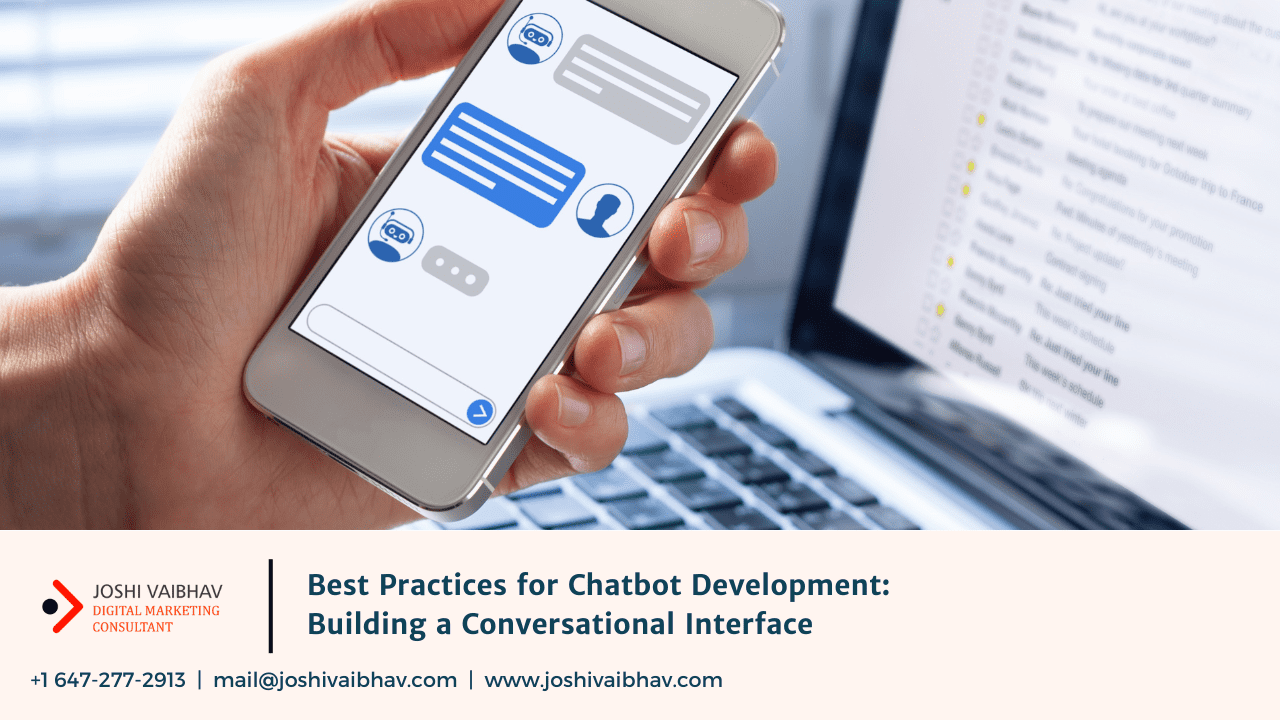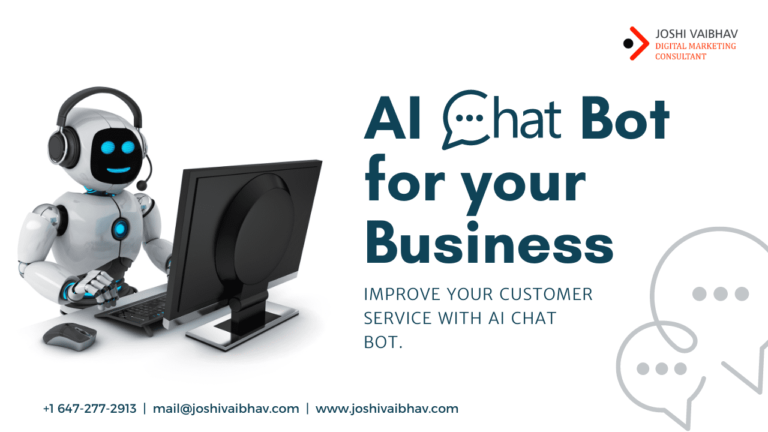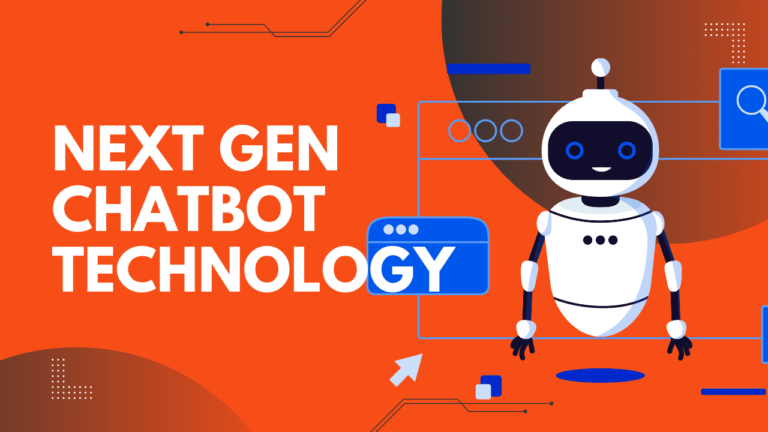Best Practices for Chatbot Development – Introduction
Chatbots have rapidly evolved from a novelty to an essential tool for businesses worldwide. They streamline customer service, enhance user engagement, and can even drive sales. As conversational interfaces become more sophisticated, building an effective chatbot requires a combination of strategic planning, advanced technology, and user-centric design.
Understanding Chatbots
Definition of Chatbots
At their core, chatbots are software applications designed to simulate human conversation. They can communicate through text or voice, providing instant responses and handling various tasks.
Types of Chatbots
There are primarily two types of chatbots: rule-based and AI-driven. Rule-based chatbots follow predefined paths, responding to specific commands. AI-driven chatbots, on the other hand, leverage machine learning and natural language processing (NLP) to understand and respond to more complex queries.
Benefits of Using Chatbots
Chatbots offer numerous benefits, including 24/7 availability, instant responses, and the ability to handle multiple queries simultaneously. They also help in reducing operational costs and improving customer satisfaction.
Planning Your Chatbot
Identifying the Purpose
The first step in building a chatbot is identifying its purpose. Are you looking to provide customer support, facilitate sales, or offer information? Clearly defining the purpose will guide the entire development process.
Defining the Target Audience
Understanding your target audience is crucial. Analyze your users’ demographics, preferences, and behavior to tailor the chatbot’s personality and responses accordingly.
Setting Clear Objectives
Set measurable objectives for your chatbot. Whether it’s reducing response time, increasing user engagement, or improving customer satisfaction, having clear goals will help you evaluate the chatbot’s success.
Designing the Conversational Interface
Principles of Conversational Design
A good conversational interface should be intuitive and user-friendly. Keep the conversation natural, concise, and engaging. Avoid jargon and ensure the bot’s responses are relevant to the user’s queries.
Creating User Personas
Develop user personas to represent your target audience. This helps in designing conversations that resonate with different user groups and addressing their specific needs.
Storyboarding Conversations
Storyboard potential interactions to visualize the user experience. Map out various conversation paths and scenarios to ensure the chatbot can handle a wide range of queries effectively.
Choosing the Right Technology
Natural Language Processing (NLP)
NLP enables chatbots to understand and process human language. Choose robust NLP tools to enhance your chatbot’s ability to comprehend and respond accurately to user inputs.
Machine Learning Algorithms
Incorporate machine learning algorithms to improve your chatbot’s performance over time. These algorithms help the bot learn from interactions, making it smarter and more efficient.
Chatbot Development Platforms
Several platforms, such as Dialogflow, Microsoft Bot Framework, and IBM Watson, offer comprehensive tools for chatbot development. Select a platform that aligns with your technical requirements and business goals.
Developing the Chatbot
Writing Effective Dialogues
Craft dialogues that are clear, concise, and engaging. Use a conversational tone and anticipate various user responses to ensure the chatbot can handle different scenarios.
Implementing NLP and AI
Integrate NLP and AI technologies to enhance the chatbot’s capabilities. This allows the bot to understand context, recognize intent, and provide relevant responses.
Integrating with Existing Systems
Ensure your chatbot can seamlessly integrate with your existing systems, such as CRM software, databases, and other backend systems, to provide a cohesive user experience.
Testing Your Chatbot
Importance of Testing
Thorough testing is crucial to identify and fix issues before the chatbot goes live. It helps in ensuring the bot performs well under different conditions and user interactions.
Types of Testing
Conduct various types of testing, including functional testing, usability testing, and performance testing. This comprehensive approach ensures the chatbot is reliable and user-friendly.
Gathering User Feedback
Gather feedback from real users to understand their experience and identify areas for improvement. User feedback is invaluable for refining the chatbot and enhancing its effectiveness.
Launching the Chatbot
Pre-launch Checklist
Before launching, ensure all systems are go. Test for any last-minute issues, confirm integration with other systems, and prepare your team for any potential challenges.
Monitoring Performance
Once launched, continuously monitor the chatbot’s performance. Track key metrics such as response time, user engagement, and satisfaction levels to assess its effectiveness.
Making Initial Adjustments
Be prepared to make adjustments based on initial performance data and user feedback. Fine-tuning the chatbot post-launch is essential for optimizing its performance.
Optimizing Chatbot Performance
Analyzing User Interactions
Regularly analyze user interactions to identify trends and common issues. This helps in understanding user needs and improving the chatbot’s responses.
Continuous Improvement
Adopt a mindset of continuous improvement. Regularly update the chatbot’s content and capabilities to keep it relevant and effective.
Updating Content Regularly
Keep the chatbot’s content fresh and up-to-date. Regular updates ensure the bot provides accurate information and maintains user interest.
Ensuring Security and Privacy
Data Protection Measures
Implement robust data protection measures to safeguard user information. Encrypt data, use secure connections, and comply with data protection regulations.
Complying with Regulations
Ensure your chatbot complies with relevant regulations such as GDPR, CCPA, and others. Compliance builds trust and prevents legal issues.
Building User Trust
Building and maintaining user trust is crucial. Be transparent about data usage and ensure users’ privacy is respected.
Enhancing User Engagement
Personalization Techniques
Personalize interactions to make users feel valued. Use their names, remember past interactions, and tailor responses to their preferences.
Interactive Features
Incorporate interactive features such as quick replies, buttons, and multimedia elements to make conversations more engaging.
Using Multimodal Interfaces
Enhance the user experience by supporting multimodal interfaces, such as voice and text, to cater to different user preferences.
Case Studies
Successful Chatbot Implementations
Study successful chatbot implementations to understand best practices and strategies. Analyze what worked well and how similar approaches can be applied to your project.
Lessons Learned from Failures
Learn from chatbot failures to avoid common pitfalls. Understand the reasons behind unsuccessful projects to improve your chatbot development process.
Future Trends in Chatbot Development
AI and Machine Learning Advances
Stay updated with advances in AI and machine learning. These technologies continuously evolve, offering new opportunities to enhance chatbot capabilities.
Voice-Activated Assistants
Voice-activated assistants are becoming increasingly popular. Consider integrating voice capabilities to make your chatbot more versatile.
Integration with IoT
The Internet of Things (IoT) is expanding, and chatbots can play a significant role. Explore how your chatbot can interact with IoT devices to offer innovative solutions.
Challenges in Chatbot Development
Overcoming Language Barriers
Address language barriers by incorporating multilingual capabilities. Ensure your chatbot can communicate effectively with users from different linguistic backgrounds.
Handling Complex Queries
Equip your chatbot to handle complex queries. Use advanced NLP techniques and continuously train the bot to improve its understanding and responses.
Maintaining User Interest
Keep users engaged by regularly updating the chatbot’s content and features. Use gamification and other techniques to make interactions more interesting.
Conclusion
Building a conversational interface is a complex but rewarding process. By following best practices in planning, design, technology selection, and continuous improvement, you can create a chatbot that not only meets but exceeds user expectations. As AI and machine learning technologies advance, the potential for chatbots will only grow, making them an integral part of digital interactions.
FAQs
1. What are the key benefits of using chatbots? Chatbots offer 24/7 availability, instant responses, cost savings, and the ability to handle multiple queries simultaneously, enhancing customer service and engagement.
2. How important is NLP in chatbot development? NLP is crucial as it enables the chatbot to understand and process human language, making interactions more natural and effective.
3. What are some common challenges in chatbot development? Common challenges include overcoming language barriers, handling complex queries, and maintaining user interest over time.
4. How can I ensure my chatbot is secure? Implement robust data protection measures, comply with regulations, and be transparent about data usage to build and maintain user trust.
5. What future trends should I watch in chatbot development? Keep an eye on advances in AI and machine learning, the rise of voice-activated assistants, and the integration of chatbots with IoT devices for future innovations.



